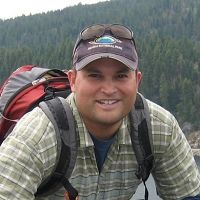Pandit et al. 2020 (In Review)
Understanding the effect of fire on vegetation composition and gross primary production in a semi-arid shrubland ecosystem using the Ecosystem Demography (EDv2.2) model
Pandit, K., Dashti, H., Hudak, A.T., Glenn, N.F., Flores, A.N., and D.J. Shinneman (2020)
Biogeosciences Discuss.
-
Reynolds, INVESTIGATOR
-
Reynolds, GRAD STUDENT
-
Reynolds, INVESTIGATOR
-
Reynolds, INVESTIGATOR
Abstract
Wildfire incidents in sagebrush (Artemisia spp.) dominated semi-arid ecosystems in the western United States have risen dramatically in the last few decades. Severe wildfires often lead to the loss of native sagebrush communities and change the biogeochemical conditions which make it difficult for sagebrush to regenerate. Invasion of cheatgrass (Bromus tectorum) accentuates the problem by making the ecosystem more susceptible to frequent burns. Managers have implemented several techniques to cope with the cheatgrass-fire cycle, ranging from controlling undesirable fire effects by removing fuel loads either mechanically or via prescribed burns, to seeding the fire-affected areas with shrubs and native perennial forbs. There have been a number of studies at local scales to understand the direct impacts of wildfire on vegetation, however there is a larger gap in understanding these impacts at broad spatial and temporal scales. This need highlights the importance of global dynamic vegetation models (DGVMs) and remote sensing. In this study, we explored the influence of fire on vegetation composition and gross primary production (GPP) in the sagebrush ecosystem using the Ecosystem Demography (EDv2.2) model, a dynamic vegetation model. We selected Reynold Creek Experimental Watershed (RCEW) to run our simulation study, which represents sagebrush dominated ecosystems in the northern Great Basin. We ran point-based simulations at four existing flux-tower sites in the study area for a total 150 years after turning on the fire module in the 25th year. Results suggest dominance of shrub in a non-fire scenario, however under the fire scenario we observed contrasting phases of high and low shrub and C3 grass growth. Regional model simulations showed a gradual decline in gross primary production (GPP) for fire-introduced areas through the initial couple of years instead of killing all the vegetation in the affected area in the first year itself. We also compared the results from EDv2.2 with satellite data for the areas in RCEW affected by the 2015 Soda Fire. We observed a good spatial agreement between modeled GPP and a Landsat image-derived index for the study area with moderate to marginally strong correlations at the pixel level between maps of post-fire recovery GPP and the vegetation response observed in a post-fire Landsat image. This study contributes in understanding the application of ecosystem models to investigate temporal dynamics of vegetation under alternative fire regimes and the spatial behavior of post-fire ecosystem restoration.
Citation
Pandit, K., Dashti, H., Hudak, A.T., Glenn, N.F., Flores, A.N., and D.J. Shinneman (2020): Understanding the effect of fire on vegetation composition and gross primary production in a semi-arid shrubland ecosystem using the Ecosystem Demography (EDv22) model. Biogeosciences Discuss.. DOI: https://doi.org/10.5194/bg-2019-510
 This Paper/Book acknowledges NSF CZO grant support.
This Paper/Book acknowledges NSF CZO grant support.
Explore Further




